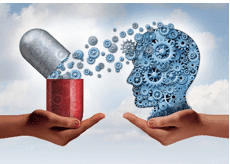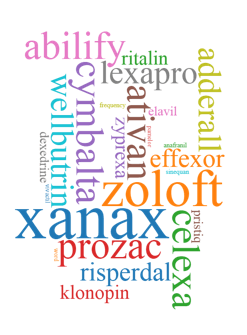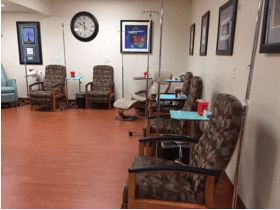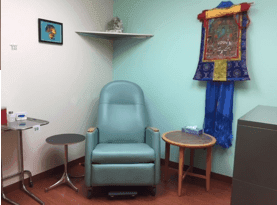Neurorecovery is a program that helps those receptors heal.
The hardest part is the cravings. Cravings are the need to use a drug just to stay on an even keel, to avoid the unbelievably bad sensations of the nervous system trying to wake up. Just to be able to function normally, for Pete’s sake. If our drug of choice is alcohol, we jokingly call it the “hair of the dog that bit us” – that first shot in the morning that restores balance to our world.
What if there were a way to get over the cravings quickly, within a few days? Without having to fight them every day for weeks and months on end? Without the risk of death from withdrawal? Without feeling we are going to die from withdrawal?
Willingness to quit is the first step. After that, it’s just a matter of time and finances.
Read more... about addiction… about the withdrawal program… about the time commitment… about the cost of the program…
Addiction is a disease of damaged neurotransmitter receptors, not of willpower or morals.
Whether we get our drugs on the street or at the pharmacy, whether we wear a business suit or surgical scrubs and go to the office or the operating room every day, or wear cast-off clothes and live on the streets, has no bearing on either addiction or withdrawal symptoms.
Addiction is a disease of damaged neurotransmitter receptors which have been compromised by our drug of choice.
These drugs may be street drugs, or prescribed medications purchased from a pharmacy. ALL drugs that act on the nervous system and the brain in the long run damage our neurotransmitter receptors. And in the long run, we find that we cannot live without them.
What if there were a way to get off the medicines more gracefully, with fewer symptoms? What if we could get rid of the cravings?
And what if this program worked for all the drugs that affect our brains, our mood, our neurotransmitters?
- benzodiazepines – Valium, Xanax, clonazepam, Ativan.
- opiates – oxycodone, hydrocodone, Percocet, morphine, methadone, heroin
- antidepressants – Prozac, Wellbutrin, Remeron
- antipsychotics – Zyprexa, Risperdal, Clozaril
- stimulants – Adderall, Ritalin, meth, cocaine
- alcohol, barbiturates, sleeping pills and other sedatives
- nicotine – cigarettes, cigars, vapes, chew…
- even addictive behaviors – gambling, sex, work, exercise…
 Whether the drugs are legal prescription drugs, illegal street drugs, or
behaviors that stimulate our brain’s reward system makes no significant
difference in the way they operate within the body. The only difference
is where we buy them and whether we can be arrested for using them.
Whether the drugs are legal prescription drugs, illegal street drugs, or
behaviors that stimulate our brain’s reward system makes no significant
difference in the way they operate within the body. The only difference
is where we buy them and whether we can be arrested for using them.
In the beginning, the “feel good” medicine, the “happy pill”, felt amazing.
As time went on, we required the stuff to “feel normal”.
In the end, we don’t feel normal anyway, we just require the stuff to stay alive and functional.
And eventually we stop being functional.
Withdrawal is always unpleasant. Sometimes it is beyond unpleasant. We can get very sick – any narcotic addict will tell you that. We can even die in withdrawal – alcohol, more than any other drug, can cause fatal withdrawal reactions.
Because the brain’s neurotransmitter receptors have been damaged by the drugs, and now truly require these drugs to function at all – even if not normally – we are tempted to do things that we would never think of doing if we were in our right minds – visiting doctors in different parts of town, taking other drugs if we cannot find a source of the one that our bodies crave, lying, stealing, selling our bodies for a hit… Addicts are all in the same boat, whatever their socio-economic status. Having money does not protect us from addiction. Our brains all work the same way, under the influence of any medicines or drugs which mess with our neurotransmitters.
If a medicine modifies neurotransmitter receptors and damages them so that they do not recover spontaneously, that drug is addicting.
If we can take it or leave it, we are not addicted. If we say we can take it or leave it, but simply do not choose to leave it, we are probably addicted.
If we can’t leave it, we are definitely addicted.
Addiction is a steep and slippery slope. Doesn’t everyone take a Valium® to survive stress, just to calm the nerves? Doesn’t everyone take Adderall® to help them study, pass those exams, feel their brain waking up? Doesn’t everyone need something like Prozac® to get over the depression in their lives? And cocaine or Adderall®… the feeling of invincibility and brilliance of mind under the influence of cocaine is almost irresistible, once it has been experienced…
 The worst part is that we can see that slippery slope – we even see
the runaway truck exit ramps – but we just can’t get ourselves
to take those ramps. The inevitable crash is just too fearsome to even
contemplate.
The worst part is that we can see that slippery slope – we even see
the runaway truck exit ramps – but we just can’t get ourselves
to take those ramps. The inevitable crash is just too fearsome to even
contemplate.
So we pretend we have it under control. And live our lives in silent desperation.
What if there were a way to get over the cravings? Without having to fight them every day for months or years? Without the risk of death from withdrawal? Without even feeling we were going to die from withdrawal?
There is a way – based on years of research by Dr. William Hitt.
This is not a magic bullet. It requires three things for success:
- An overwhelming desire to get off the drugs.
- Commitment of time – about two weeks.
- Commitment of money – between $10,000 and $13,000 depending on the drugs of choice.
 Withdrawal from any of the psychotropic drugs – those which affect
our neurotransmitters and their receptors – can be an extremely
difficult process. Anyone who has ever tried to quit smoking, or come
off their chronic pain medications, has had the experience of symptoms
of withdrawal. Sometimes these symptoms are so intolerable that we simply
go back on the drug – as nasty as it may be – rather than
suffer through the withdrawal.
Withdrawal from any of the psychotropic drugs – those which affect
our neurotransmitters and their receptors – can be an extremely
difficult process. Anyone who has ever tried to quit smoking, or come
off their chronic pain medications, has had the experience of symptoms
of withdrawal. Sometimes these symptoms are so intolerable that we simply
go back on the drug – as nasty as it may be – rather than
suffer through the withdrawal.
And when we do manage to get off the drugs, we may find that we still have cravings for them months later. Or that we just still feel terrible, even though there are no cravings. Benzodiazepines are notorious for extremely lengthy withdrawal symptoms without the sensation of cravings.
Withdrawal is tough.
There is a way to withdraw in such a manner that healing of neurotransmitter receptors occurs faster than it would occur naturally (if it ever occurred naturally). All we have to do is give the neurotransmitter receptors enough of the right nutrients they require for healing – and the healing will occur in a surprisingly short time.
Healing can occur rapidly – within the space of 10 to 13 days – using a protocol of intravenous nutrients, amino acids, vitamins, and detoxification agents – all of which are normally produced in the healthy body. They have been depleted in the body on drugs – legal or illegal makes no difference. They can be replenished and restored easily.
If order to get off the drugs which are making our lives intolerable, there are only three requirements for success:
- Burning desire to get off the drugs resulting in a core decision to do so.
- Willingness to spend the time it takes to get off the drugs.
- Willingness to pay for the treatment.
You will receive each day a vitamin and nutrient infusion, with glutathione, and a specific blend of amino acids (depending on your current drug use) that will help repair the damaged receptors in your brain.
It’s all about healing the receptors. With benzodiazepines, there is no particular craving, you just can’t get out of bed when you are in withdrawal. And the withdrawal goes on for a VERY long time, depending on how damaged your neurotransmitter receptors are. With many of the other drugs, withdrawal may be VERY intense, but is significantly diminished with the therapy, and is usually no longer a factor after the first 2-3 days.
The only requirement for success in the program will be that you stop taking any drugs by the first day of therapy (except for methadone which has such a long half life that it is tapered for 3 days before stopping). If withdrawal symptoms are extreme, you may take the drugs on day one of therapy, but not beyond. If you are already off the drugs, therapy may go more quickly.
If you continue to take the drugs during therapy, you might as well save your money and not do the therapy at all, since the neuroreceptors will continue to be damaged – kind of like trying to plug a barrel with a pencil when the bottom has dropped out.
The formulas infused will be specific to you, and to the pharmaceuticals that you have been using. So it is important that we are clear on what drugs we are treating.
 You do NOT stop thyroid medicine, diabetes medicine, anti-hypertensive
medicine unless this becomes necessary during the treatment.
You do NOT stop thyroid medicine, diabetes medicine, anti-hypertensive
medicine unless this becomes necessary during the treatment.
 Be sure to bring something to do, and some food. Plan to stop all the psychiatric
drugs and pain medicines either the day before you start treatment (preferably)
or on day 1 of treatment.
Be sure to bring something to do, and some food. Plan to stop all the psychiatric
drugs and pain medicines either the day before you start treatment (preferably)
or on day 1 of treatment.
There are specific supplements to take after the 10-13 day treatment is completed, to continue the process of healing of the neurotransmitter receptors. It is essential to take these, so that true healing may occur.
Should any recurrence of cravings or other symptoms occur, it is easy to do a one or two day “booster” treatment to get you back on track. It is, of course, best if you have the booster within a day or two of noticing any recurring symptoms, so as to avoid backsliding.
For the narcotics – Tramadol, etc – you may very well notice that you have LESS pain once you are off them completely. They can cause a paradoxical pain reaction because of damage to those neurotransmitters, producing the very symptoms that they were supposed to eliminate.
Cost of withdrawal protocol
Cost of the treatment is $1000 per day. If you pay the whole thing in one payment, there is a 20% discount. More than one payment is, of course, an option and carries a progressively smaller discount with increasing numbers of payments.
Questions?
Please let us know if you have any questions prior to starting therapy.
We look forward to working with you and are honored to participate in your new life direction.
